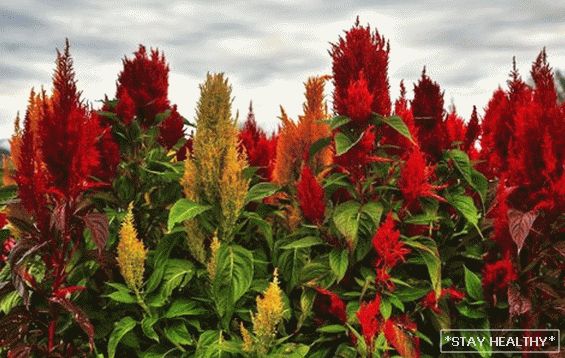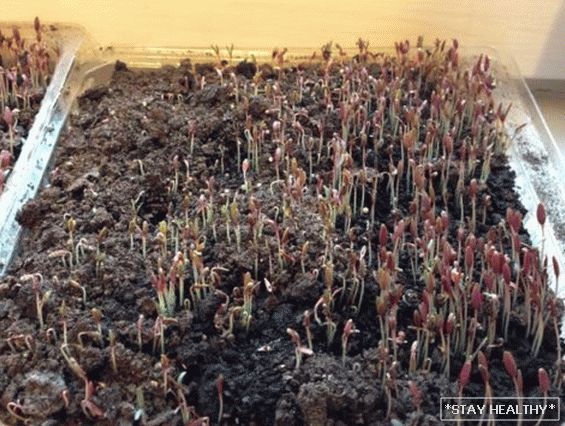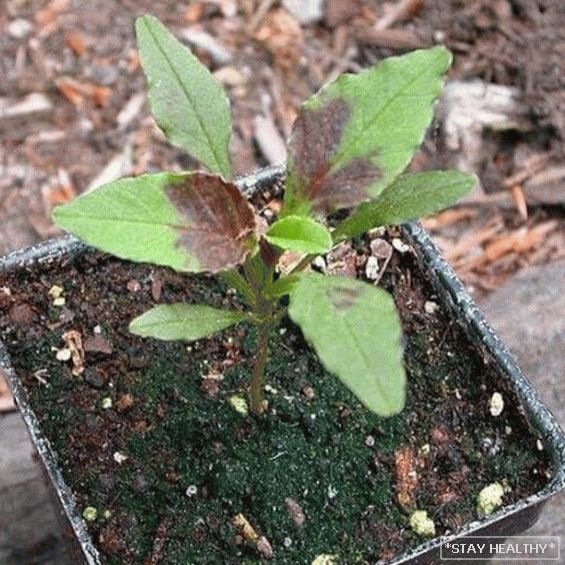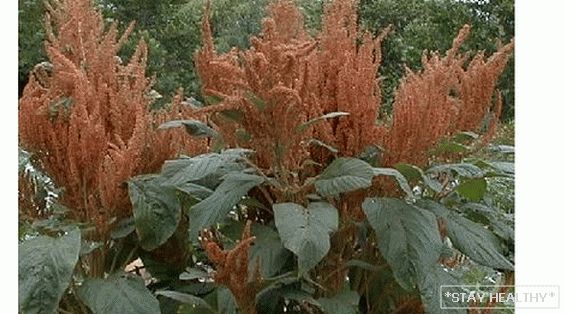 Ср, 27 сен 2017 Автор: Юлия Кривенко
Ср, 27 сен 2017 Автор: Юлия Кривенко
Amaranth or shchiritsu in our climate is grown as
annual plant cannot tolerate harsh winters. Nothing
there is no difficult planting seeds, but some features to know
necessary.
Contents
Sowing and cultivation of amaranth from seeds
Amaranth seeds are very small, they can be sown on seedlings or
immediately to the ground. With favorable weather, the seeds quickly sprout,
seedlings develop well.
How to sow amaranth seeds in the ground
In late April, prepare a bed, dig it in advance,
level and clean weeds. Under the digging can make
mineral fertilizers, but you need to know the measure. Plant turns
nitrogenous fertilizers in nitrates, hazardous to health.

Make shallow grooves, approximately 1.5 cm and evenly
distribute seeds. For convenience, they are mixed with sand or
sawdust. Lightly tuck into the ground. Shoots will appear on day 10, as
only they get stronger, thin the seedlings. Between plants should
stay at least 10 cm.
Feed the seedlings when they reach a height of 20 cm.
Use mineral complexes, but the dosage is reduced in 2
times
Tip! No need to postpone sowing
seed in May, as the weeds displace the plant.
Growing amaranth seedlings (instructions with photos)
To start growing seedlings no earlier than March. Use
bowls, plastic containers or low pots. They are filled
loose ground. Seeds are buried at a depth of 2 cm. Tanks
Cover with glass and clean in a warm place. For germination seeds
need a temperature of +22 ° C. Under suitable conditions, seedlings appear
a week later. When the seedlings are stronger, be sure to thin them,
remove all weak plants.

Pick into separate containers is done in the phase of 3 true leaves.
Pots choose spacious, not less than 12 cm in diameter.

Transplant amaranth in open ground
The plant is transferred to a permanent place in May, when they pass
return frosts. Absorb the plot with light and fertile
soil, but moderately dry. The plant does not tolerate moisture.
Landing holes are made at a distance of 10 to 30 cm, this
depends on the variety. While amaranth seedlings take root, you need to
properly care. If the weather is dry and hot, then the plants
water as needed. For the night the bed is covered to
protect seedlings from possible frost.
Care for amaranth in the garden
Growing amaranth, you do not have to work hard. Plant
completely unpretentious, does not require special knowledge. For him
there will be enough standard procedures:
• watering as necessary;
• weeding and removal of soil weeds;
• soil loosening after irrigation.
In the first month, the saplings grow slowly, so they need
more thorough care. Watch the weeds in the garden, in time
remove. An adult plant already independently copes with them.
Weeds do not grow around amaranth.
During the season it is allowed to feed the amaranth several times. It is better
use organic matter, for example, mullein infusion. To feed
plant need in the morning.
Pests and diseases that complicate cultivation
amaranth
In general, the plant is resistant to pests, it is rarely affected
diseases. But there are times when amaranth suffers from aphids and
weevil.
Aphids appear in wet weather, harming only young plants.
To get rid of the pest, the bushes are sprayed with folk infusions.
or insecticides.
Weevil larvae develop in the plant stems, up to
certain moment they can not be seen. Identify the affected
plant can be according to general characteristics. It looks sluggish, lags behind
in growth, the color of the leaves grows dull. Get rid of the pest will help
insecticides. Good results are obtained by treatment with aktellik or
karbofosy.
In rainy summer even good care for amaranth does not help,
the plant is affected by fungal diseases. All diseased plants
better to remove, healthy planting spray preparations containing
copper. Preventive treatment is carried out every 10 days, while
weather conditions do not improve.
How to care for amaranth after flowering
As already mentioned, our amaranth is grown as
one-year culture. Therefore, after flowering bushes are removed.
If you need seed buds, then leave a few strong.
plants. When the lower leaves dry on them and disappear, then
start collecting seeds. Cut the inflorescences and fold in the dark dry
place to dry. The room where the amaranth should dry
well ventilated. When the buds are completely dry, the seeds
easy to fall out yourself, just rub the spikelet between your palms.
You need to store the seeds in a paper bag for about 5 years. Thereafter
they lose their germination. It is noticed that more friendly gatherings are obtained
from fresh seeds than from stale.
Популярные сорта и виды amaranth, которые выращивают
everywhere
Amaranth paniculata grown in flower beds or in flower beds. Him
used in the preparation of bouquets, like dried flowers. Bush high
about 150 cm, the leaves are reddish with a brown tinge. Racemes
inflorescences bloom in early summer and bloom until frost. Among
varieties are stunted varieties.

Разновидности метельчатого amaranth:
• Grunefakel – low bush, inflorescences are dark green,
racemes.
• Tsvergfakel – a short-growing plant, spikelets of purple
coloring.
• Rother Paris and Rother Dame – medium height bushes
60 cm. The inflorescences are maroon and cherry.
• Hot Biscuit – tall bush, orange-red panicles
colors.
Sad Amaranth – lightly branchy shrub about 0.5 m high.
It blooms mostly with dark spikelets. Varieties:
• Green Tamb – medium tall shrub about 40 cm high
Purple inflorescences are used as dried flowers.
• Pygmy Torch is a tall plant, the bush reaches 65 cm.
Inflorescences in autumn are painted in chestnut color.
Amaranth tricolor – decorative leafy tall
bush. Pyramidal bush, erect. Yellow, green leaves
or red. Blossoms until frost. Coloring inflorescences
varied.

Varieties and varieties:
• Illumination – a plant with large red-yellow leaves.
In the fall, they change color to purple.
• Aurora – a bush with golden yellow leaves, the edges of the leaves
wavy.
• Airlie is an ornamental shrub, its upper leaves are painted in
raspberry color, lower dark.
Как видно, разновидностей amaranth много, есть из чего выбрать.
Try to plant a plant in the garden, it does not require attention, and his
spikelets can be dried and used in winter bouquets.





